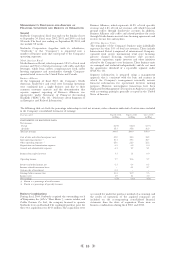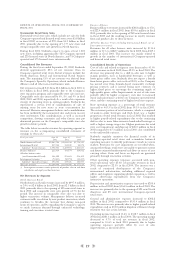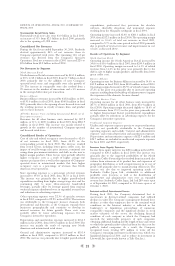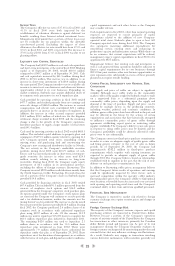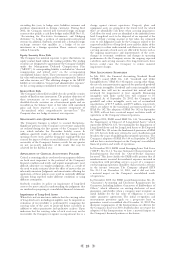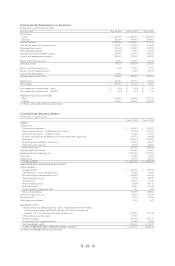Starbucks 2002 Annual Report Download - page 2
Download and view the complete annual report
Please find page 2 of the 2002 Starbucks annual report below. You can navigate through the pages in the report by either clicking on the pages listed below, or by using the keyword search tool below to find specific information within the annual report.
16
regions, based primarily on geography. At fiscal year end, the
Company had a total of 928 licensed international retail stores
located in the following operating regions:
Asia-Pacific Europe/Middle East/Africa Latin America
Japan 397 United Arab Emirates 23 Hawaii 30
Taiwan 99 Saudi Arabia 22 Mexico 1
China 88 Kuwait 16 Puerto Rico 1
South Korea 53 Switzerland 12
Philippines 49 Lebanon 11
New Zealand 34 Israel 6
Singapore 32 Austria 5
Malaysia 26 Spain 5
Indonesia 5 Germany 4
Qatar 3
Bahrain 2
Greece 2
Oman 2
TOTAL 783 113 32
Product sales to, and royalty and license fee revenues from,
licensed international retail stores accounted for approximately
17% of specialty revenues in fiscal 2002.
Grocery Channel Licensing
Starbucks has a licensing agreement with Kraft Foods, Inc.
(“Kraft”) to market and distribute Starbucks whole bean and
ground coffees in the grocery channel in the United States.
Pursuant to that agreement, Kraft manages all distribution,
marketing, advertising and promotions for Starbucks whole
bean and ground coffee in grocery and mass merchandise
stores and pays a royalty to Starbucks based on a percentage of
total net sales. By the end of fiscal 2002, the Company’s whole
bean and ground coffees were available throughout the United
States in approximately 18,000 supermarkets. Revenues from
the grocery channel accounted for approximately 13% of
specialty revenues in fiscal 2002.
Warehouse Club Accounts
The Company sells whole bean and ground coffees to ware-
house club chains in North America. As part of its agreement
with Starbucks to market and distribute to the grocery
channel, Kraft distributes Starbucks products to warehouse
club stores, for which the Company pays a distribution fee.
Revenues from warehouse club accounts represented
approximately 13% of specialty revenues in fiscal 2002.
Interactive Operations
The Company makes Starbucks coffee and coffee-related
products conveniently available via mail order and online.The
Company maintains a website at Starbucks.com with an online
store that allows customers to purchase coffee, gifts and other
items via the Internet. Starbucks also publishes and distributes
a catalog of business gifts that offer coffees, certain food items
and select coffee-making equipment and accessories.
Additionally, Starbucks offers customers high-speed wireless
Internet access at approximately 1,650 enabled Company-
operated retail stores.
Management believes these interactive operations support its
retail store expansion into new markets, and reinforce brand
recognition and the Starbucks Experience for customers in
existing markets. The Company’s interactive operations
accounted for approximately 7% of specialty revenues in
fiscal 2002.
Equity Investees and Other Initiatives
The Company has two partnerships to produce and distribute
Starbucks branded products. The North American Coffee
Partnership with the Pepsi-Cola Company develops and
distributes bottled Frappuccino and Starbucks DoubleShot
coffee drinks. The Starbucks Ice Cream Partnership with
Dreyer’s Grand Ice Cream, Inc. develops and distributes
premium ice creams. Starbucks sells roasted coffee for use by
equity investees, and these revenues accounted for
approximately 2% of specialty revenues in fiscal 2002.
The Company has several other initiatives related to its core
businesses that are intended to enhance the customers’
experience at Starbucks retail stores. For example, the
Company has marketed a selection of premium tea products
since the acquisition of Tazo, L.L.C. in 1999. Collectively,
these initiatives accounted for approximately 3% of specialty
revenues in fiscal 2002.




